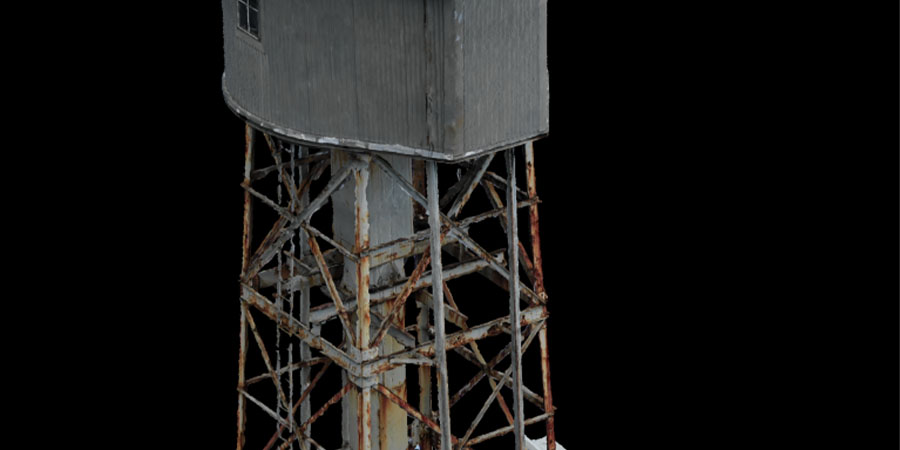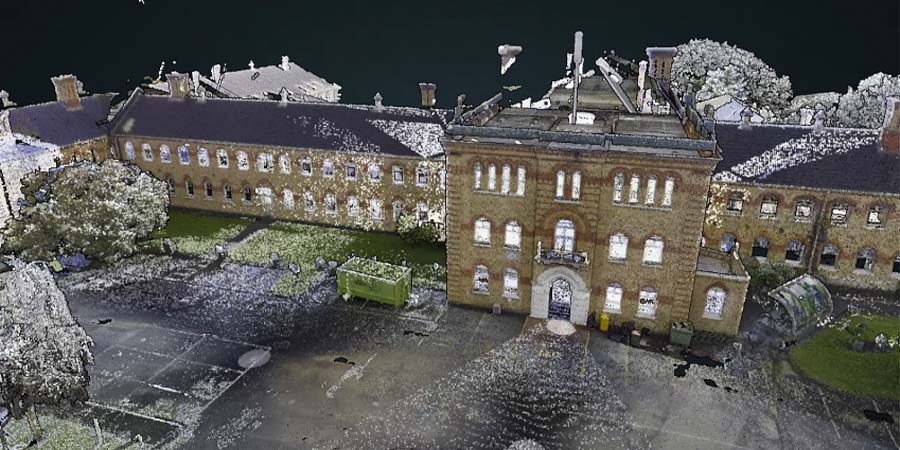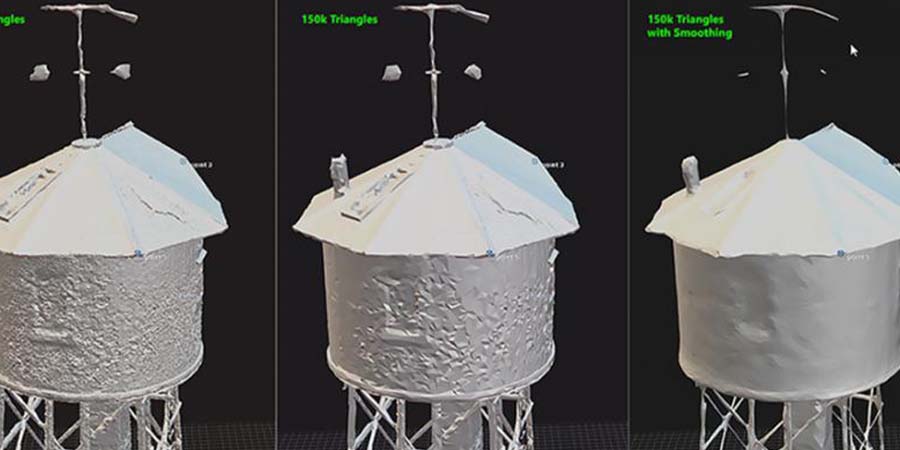Using digital technology to preserve the past
Digital scanning technology developed by Unitec’s School of Architecture is helping to create a virtual record of threatened historical landmarks.
The Colonial Ammunition Company Shot Tower on Normanby Road in Mt Eden, Tāmaki Makaurau Auckland has been a local landmark since 1916. It was the last Shot Tower standing in Aotearoa New Zealand and was believed to be the only steel-framed tower of its kind in the Southern Hemisphere.
The tower stood about 35 metres high and, when operational, produced small shot balls from free-falling molten lead. However, in February 2023, as Cyclone Gabrielle barrelled towards Tāmaki Makaurau Auckland, fears grew that the forecast gale-force winds would cause the tower to fall onto nearby residential apartments, so Auckland Council decided to demolish the tower.
However, its historical importance meant Auckland Council and Heritage New Zealand wanted to make a permanent digital record of the structure and its site. Moving fast, they partnered with the School of Architecture at Unitec |Te Pūkenga and the School of the Built Environment at Massey University to conduct a drone scan of the historic structure.
Associate Professor Renata Jadresin-Milic from Unitec’s School of Architecture and Professor Regan Potangaroa from Massey University created a plan to capture detailed images and data of the Shot Tower and its surroundings based on a carefully planned drone flight path, which encompassed all necessary angles, close-up shots of historic features and wider shots that placed the structure in its historical context. All of this had to be achieved while working outside the 35-metre cordoned-off zone of the Shot Tower.

The technology used to capture the tower builds on the academic research work of Assoc Prof Jadresin-Milic, who also heads up Unitec’s Digital Heritage Research Centre. Digital recording and heritage preservation technology is now being taught to students at Unitec’s School of Architecture as an integral part of their programme.
With so many important heritage buildings being lost, Assoc Prof Jadresin-Milic says incorporating digital technology into architectural practice helps practitioners to accurately document, assess, interpret and repair our heritage sites.
“It is also an exciting and valuable new tool for architecture students, especially as they learn about the importance of heritage protection and preservation and how to work collaboratively with local communities and agencies towards a common goal,” she says.
One of the first projects undertaken within Unitec’s Digital Heritage Research Centre saw students use scanning (with LiDar and Photogrammetry technology) and 3D-modelling to capture the heritage ‘Building 1’ that was part of the Unitec Mt Albert campus to produce a digital record of the complex. This proved critical as parts of this heritage building were demolished earlier this year. The detailed visual records and documentation developed by the School of Architecture and Digital Heritage Research Centre team at Unitec provide invaluable information that helps understand and digitally preserve what no longer exists.

Similarly, the practical application of digital technology was demonstrated when scanned data from the Shot Tower was processed to produce point clouds and digital copies of the Shot Tower.
“This data can be used for a 3D model or virtual tour, which can be accessed by future researchers, historians, or interested members of the public. This is important work that brings together a notable piece of Auckland’s history while demonstrating the value of using cutting-edge technology to document and understand our past. We plan to apply similar methods to the preservation of other significant heritage sites in Tāmaki Makaurau,” said Assoc Prof Jadresin-Milic and Prof Regan Potangaroa.
The Centre’s work is also attracting interest overseas, with the recent publication of an academic paper on the Shot Tower project in the Italian architectural and cultural heritage journal, DISEGNARECON and another academic paper on the Building One (formerly known as Oakley Hospital and Carrington Hospital), was published in the international journal Sustainability
Credits:
Figure 1: Colonial Ammunition Shot Tower. Digital render of the shot tower – Comparison of mesh detail after simplification. Credit: Sam Smith – WOODS, based on drone recording by Regan Potangaroa and Renata Jadresin-Milic, 2023
Figure 2: Colonial Ammunition Shot Tower. Rendered Photogrammetry Mesh. Credit: Sam Smith and Maksym Khovalko, model based on drone recording by Regan Potangaroa and Renata Jadresin-Milic, 2023
Figure 3: Building One point cloud. Credit: Digital Heritage Research Centre.
Order brochure Apply Now Digital Heritage Research Centre
